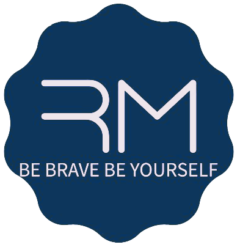
Introduction
In this transformative book, Ford guides readers on a profound journey of self-discovery by exploring the concept of the shadow self. She explains that the shadow encompasses those aspects of ourselves that we often hide, deny, or suppress because they are deemed negative or undesirable. Through personal anecdotes and psychological insights, Ford illustrates how confronting and embracing these shadow aspects is crucial for personal growth and emotional healing.
For instance, imagine a person who has always prided themselves on being kind and compassionate but finds themselves experiencing sudden bursts of anger and resentment. By acknowledging and exploring these darker emotions instead of suppressing them, they may uncover underlying issues or traumas that need healing. Through introspection and self-compassion, they can integrate these shadow aspects, leading to greater emotional balance and authenticity.
Another example could be someone who struggles with feelings of inadequacy and self-doubt, constantly striving for perfection to mask their insecurities. By recognizing that these feelings stem from their shadow self – perhaps rooted in childhood experiences or societal expectations – they can begin to cultivate self-acceptance and inner peace. Through practices like journaling, therapy, or mindfulness, they can embrace their imperfections and cultivate a deeper sense of self-worth.
By reading “The Dark Side of the Light Chasers” and applying its principles, individuals can embark on a journey of self-discovery and empowerment. Through the integration of their shadow self, they can transcend limiting beliefs, heal past wounds, and live more authentically. It’s a powerful reminder that true personal growth often begins by embracing the full spectrum of our humanity, both light and dark.
Understanding the Shadow
In this pivotal chapter, Ford illuminates the profound significance of the shadow self in personal development. She elucidates that the shadow comprises those aspects of ourselves that we repress or deny because they conflict with our desired self-image. Through relatable anecdotes and psychological insights, Ford underscores the importance of acknowledging and integrating these shadow aspects for holistic growth.
Consider the example of someone who constantly seeks external validation to compensate for feelings of unworthiness stemming from their shadow self. Despite achieving external success, they may find themselves trapped in a cycle of emptiness and insecurity. By recognizing the existence of their shadow self and exploring its origins – perhaps rooted in childhood experiences of neglect or criticism – they can begin to cultivate self-compassion and reclaim their sense of worthiness.
Similarly, imagine an individual who suppresses feelings of anger and resentment, fearing they may be perceived as confrontational or aggressive. Through Ford’s teachings, they come to understand that these emotions are valid expressions of their shadow self, often signalling unmet needs or boundaries being crossed. By embracing these feelings with curiosity and compassion, they can navigate conflicts more authentically and assertively, fostering healthier relationships.
By comprehending the nature of the shadow self and its impact on our thoughts, emotions, and behaviour, readers are empowered to embark on a journey of self-discovery and healing. Through introspection, therapy, or creative expression, they can shine a light on their shadow aspects, reclaiming lost parts of themselves and fostering greater authenticity. Ultimately, “Understanding the Shadow” serves as a foundational step towards embracing the full spectrum of our humanity and realizing our true potential.
Facing Your Shadow
In this chapter, Ford provides readers with practical tools and techniques to courageously confront the shadow self, fostering self-awareness and inner transformation. She acknowledges that facing the shadow can be daunting, as it requires acknowledging parts of ourselves that we’ve long suppressed or denied. However, she emphasizes that this process is essential for personal growth and emotional liberation.
One strategy Ford advocates is journaling, where individuals can engage in honest self-reflection and explore their innermost thoughts and feelings. For example, imagine someone who struggles with feelings of unworthiness due to childhood experiences of neglect. Through journaling, they can unravel the layers of their shadow self, uncovering deep-seated beliefs and patterns that have held them back. By shining a light on these hidden aspects, they can begin to heal and cultivate self-compassion.
Another strategy Ford suggests is engaging in shadow work exercises, such as visualization or role-playing, to confront and dialogue with different aspects of the shadow self. For instance, imagine someone who struggles with feelings of resentment towards a colleague but is unable to express it directly. Through role-playing, they can embody both themselves and their shadow aspect, engaging in a compassionate dialogue to understand the underlying motivations and needs. This process can lead to greater empathy, forgiveness, and resolution.
Furthermore, Ford encourages readers to seek support from trusted friends, mentors, or therapists who can provide guidance and perspective on their shadow journey. By sharing their struggles and insights with others, individuals can feel validated and supported in their quest for self-discovery and healing.
Overall, “Facing Your Shadow” equips readers with practical strategies and support to navigate the complexities of shadow work, empowering them to confront and integrate their shadow aspects with courage and compassion. Through these transformative practices, individuals can reclaim lost parts of themselves and emerge more whole, authentic, and empowered.
Embracing Your Shadow
In this chapter, Ford provides readers with practical strategies and exercises to embrace and integrate the shadow self, fostering self-acceptance and wholeness. She emphasizes that while confronting the shadow is crucial, true transformation occurs through the process of integration, where individuals learn to acknowledge and honour all facets of their being.
One technique Ford advocates is practising self-compassion and self-forgiveness. For example, imagine someone who struggles with feelings of guilt and shame over past mistakes or perceived shortcomings. Through daily affirmations or loving-kindness meditations, they can cultivate a compassionate inner dialogue, offering themselves the same empathy and understanding they would extend to a friend. This practice allows them to recognize their inherent worthiness and embrace their shadow aspects with kindness and acceptance.
Another technique Ford suggests is engaging in creative expression as a means of exploring and integrating the shadow self. For instance, imagine someone who grapples with feelings of anger and frustration but struggles to express them constructively. Through art, music, or writing, they can channel these emotions into a creative outlet, allowing them to process and release pent-up energy. By embracing their creative impulses, they not only honour their shadow aspects but also tap into a source of healing and self-expression.
Furthermore, Ford encourages readers to cultivate a sense of curiosity and openness towards their shadow self, rather than viewing it as something to be feared or suppressed. By adopting a stance of curiosity, individuals can explore their shadow aspects with a spirit of inquiry, seeking to understand the underlying beliefs, needs, and motivations driving their behaviour. This practice fosters greater self-awareness and empowers individuals to make conscious choices aligned with their values and aspirations.
Overall, “Embracing Your Shadow” offers readers practical techniques and insights to integrate their shadow self into their lives with courage and compassion. By embracing all facets of their being, individuals can cultivate a deeper sense of authenticity, resilience, and wholeness, allowing them to live more fully and joyfully.
The Gifts of the Shadow
In the chapter, readers are guided through an exploration of the positive aspects and hidden strengths that can be found within the shadow self. Ford challenges the conventional notion that the shadow is solely composed of negative traits, asserting that it also harbours valuable qualities and untapped potential waiting to be unearthed.
Ford encourages readers to reframe their perception of the shadow from one of fear and avoidance to one of curiosity and exploration. She argues that by embracing and integrating the shadow self, individuals can unlock a treasure trove of gifts that can enrich their lives and deepen their understanding of themselves and others.
One key insight Ford shares is that many of the qualities we admire in others are often projections of our own disowned strengths residing within the shadow. For example, someone who admires a friend’s confidence and assertiveness may discover that these same qualities lie dormant within their own shadow self, waiting to be reclaimed and harnessed for personal empowerment.
Moreover, Ford highlights how shadow traits can serve as valuable resources in navigating life’s challenges and pursuing our goals. For instance, the assertiveness and determination that may manifest as stubbornness or aggression in their shadow form can be channelled into assertive communication and assertive action when embraced consciously. By recognizing and honouring these hidden strengths, individuals can tap into a deeper reservoir of resilience, creativity, and authenticity.
Furthermore, Ford emphasizes that the shadow holds the key to our wholeness and self-realization. By integrating all aspects of ourselves – both light and dark – we can achieve a sense of inner harmony and alignment that transcends the limitations of a one-dimensional self-image. This integration allows individuals to embody their fullest potential and live authentically from a place of inner truth and integrity.
Overall, “The Gifts of the Shadow” invites readers to embark on a journey of self-discovery and empowerment, where they can uncover the hidden treasures within their shadow self and embrace their innate wholeness. By recognizing the positive aspects of their shadow, individuals can reclaim lost parts of themselves and embrace a more expansive and authentic expression of who they truly are.
Healing Through Integration
In the chapter, readers are guided through a transformative process of healing past wounds and traumas by integrating all parts of themselves, including the shadow. Ford emphasizes that true healing occurs when individuals confront and embrace their shadow aspects with compassion and self-awareness, allowing them to reclaim lost parts of themselves and experience greater wholeness and authenticity.
One key aspect of healing through integration is acknowledging and processing past wounds and traumas that may be stored within the shadow self. These unresolved experiences can manifest as emotional pain, limiting beliefs, and self-sabotaging behaviours, hindering individuals from living fully and authentically. By shining a light on these hidden wounds and traumas, individuals can begin the journey of healing and transformation.
For example, imagine someone who experienced childhood trauma, such as emotional neglect or abuse, which has left deep emotional scars and a pervasive sense of unworthiness. Through therapy, journaling, or support groups, they can explore the impact of these past wounds on their present-day experiences and behaviours. By acknowledging and validating their pain with compassion and self-compassion, they can begin to release the hold these wounds have on their psyche and reclaim their sense of self-worth and empowerment.
Furthermore, healing through integration involves cultivating self-acceptance and forgiveness for oneself and others. This process allows individuals to release feelings of guilt, shame, and resentment that may be keeping them stuck in the past. By embracing all aspects of themselves – both light and dark – individuals can foster greater inner peace, resilience, and emotional liberation.
Another aspect of healing through integration is developing healthy coping mechanisms and self-care practices to support emotional well-being and self-growth. This may involve engaging in activities such as mindfulness, meditation, exercise, or creative expression, which nurture the mind, body, and spirit. By prioritizing self-care and self-nurturing, individuals can cultivate a strong foundation for healing and personal transformation.
Overall, “Healing Through Integration” offers readers a roadmap for healing past wounds and traumas by embracing all parts of themselves, including the shadow. Through self-awareness, compassion, and self-care, individuals can embark on a journey of deep healing and personal growth, reclaiming their power and authenticity along the way.
Embracing Your Light
In the chapter “Embracing Your Light”, readers are guided through the process of balancing the light and dark aspects of themselves to achieve wholeness and authenticity. Ford emphasizes that true self-acceptance and empowerment come from embracing all facets of one’s being, including both the positive qualities traditionally associated with the “light” and the shadow aspects often deemed negative or undesirable.
One key aspect of embracing one’s light is acknowledging and celebrating one’s strengths, virtues, and positive qualities. This involves recognizing and honouring the unique gifts and talents that each individual possesses, whether it be kindness, compassion, creativity, or resilience. By shining a light on these positive aspects of oneself, individuals can cultivate a sense of self-worth, confidence, and purpose.
For example, imagine someone who excels in their career and is admired by their colleagues for their leadership skills and innovation. By acknowledging and embracing these strengths, they can step into their power and make a meaningful impact in their professional and personal life. Through self-affirmation and self-celebration, they can cultivate a sense of pride and fulfilment in their accomplishments.
Furthermore, embracing one’s light involves cultivating qualities such as gratitude, optimism, and joy that contribute to overall well-being and happiness. This may involve practising daily gratitude exercises, cultivating a positive mindset, and finding joy in simple pleasures and moments of connection. By nurturing these positive emotions, individuals can foster a greater sense of resilience and inner peace, even in the face of adversity.
However, Ford also emphasizes the importance of embracing the shadow aspects of oneself as essential components of one’s wholeness and authenticity. Rather than rejecting or denying these darker aspects, individuals are encouraged to explore and integrate them with compassion and self-awareness. By acknowledging and embracing their shadow self, individuals can gain deeper self-understanding and cultivate greater empathy and acceptance for themselves and others.
Overall, “Embracing Your Light” offers readers a holistic approach to achieving wholeness and authenticity by balancing the light and dark aspects of oneself. By embracing all facets of their being – both the positive and the shadow – individuals can cultivate a deeper sense of self-awareness, empowerment, and fulfilment, allowing them to live more authentically and joyfully.
Living Authentically
In the chapter “Living Authentically”, readers are guided towards embodying authenticity in their daily lives. Ford emphasizes that true fulfilment and happiness stem from living in alignment with one’s values, beliefs, and inner truth. This chapter serves as a roadmap for readers to embrace their authenticity by integrating all aspects of themselves, both light and shadow and expressing their true essence without fear or inhibition.
One key aspect of living authentically is cultivating self-awareness and self-acceptance. This involves deepening one’s understanding of oneself, including both strengths and vulnerabilities and embracing them with compassion and non-judgment. By acknowledging and honouring all parts of oneself, individuals can cultivate a sense of inner peace and authenticity that radiates outward into their interactions and relationships.
For example, imagine someone who has spent years suppressing their true desires and emotions to fit in with societal expectations or please others. Through introspection and self-reflection, they come to realize that living authentically means honouring their own needs, desires, and values, even if it means stepping outside of their comfort zone or facing disapproval from others. By embracing their authenticity, they can live a more fulfilling and meaningful life that is true to themselves.
Furthermore, living authentically involves aligning one’s actions and choices with their inner truth and values. This may require making difficult decisions or setting boundaries that honour one’s integrity and self-respect, even if it means risking rejection or disapproval from others. By living in alignment with their authenticity, individuals can cultivate a deep sense of self-respect and empowerment that transcends external validation.
Another aspect of living authentically is fostering genuine connections and relationships based on honesty, vulnerability, and mutual respect. This requires showing up as one’s authentic self in interactions with others, sharing one’s thoughts, feelings, and experiences openly and honestly, and allowing others to do the same. By cultivating authentic connections, individuals can experience a sense of belonging and fulfilment that enriches their lives.
Overall, “Living Authentically” offers readers a guiding framework for embracing their authenticity and living a life that is true to themselves. By integrating all aspects of themselves – both light and shadow – and expressing their true essence authentically, individuals can cultivate a deep sense of fulfilment, purpose, and joy in every aspect of their lives.
Real-life examples
This is my understanding of the book and it is not part of the book.
Let’s explore a real-life example of someone grappling with the shadow aspect of betrayal and how they can transform it into a source of growth and empowerment.
Imagine a person named Alex who often finds themselves tempted to betray others for personal gain. Perhaps Alex feels insecure about his own worth and believes that by undermining others, he can elevate himself in the eyes of others. However, these desires for betrayal and deceit stem from unresolved feelings of inadequacy and fear of vulnerability.
If Alex chooses to suppress these shadow impulses, he may experience inner turmoil and cognitive dissonance. Despite outwardly projecting an image of trustworthiness, he may struggle with feelings of guilt and self-loathing, leading to a sense of disconnection from himself and others. Moreover, suppressing these shadow aspects can manifest in destructive behaviours such as manipulation, deceit, and sabotaging relationships.
Alternatively, by embracing and integrating the shadow aspect of betrayal, Alex can embark on a journey of self-discovery and transformation. Instead of viewing these impulses as inherently negative or shameful, Alex can explore the underlying motivations and needs driving their desire to betray others.
Through introspection and self-awareness, Alex may come to realize that their desire for betrayal stems from a fear of vulnerability and a need for validation and control. By acknowledging these deeper emotions with compassion and curiosity, Alex can begin to heal the wounds that fuel their shadow impulses.
Furthermore, Alex can harness the energy of betrayal in a constructive manner by channelling it into healthier outlets. For example, he can cultivate assertiveness and boundary-setting skills to assert his needs and desires without resorting to deceitful tactics. Additionally, Alex can use his understanding of human behaviour to build authentic connections based on trust and mutual respect.
By embracing his shadow aspect of betrayal as a catalyst for growth and self-awareness, Alex can reclaim his power and authenticity. Through this process, he can cultivate deeper empathy, integrity, and resilience, ultimately transforming his shadow into a source of strength and wisdom.
Let’s explore another scenario where a wife, let’s call her Sarah, grapples with the shadow desire to cheat on her spouse. Sarah may experience conflicting emotions and desires, feeling drawn towards infidelity while also feeling guilt and shame for entertaining such thoughts. If she chooses to suppress these shadow impulses, Sarah may experience inner turmoil and strained relationships with her spouse, as she struggles to reconcile her desires with societal norms and personal values.
However, by embracing and integrating her shadow desire for infidelity, Sarah can embark on a journey of self-discovery and transformation. Rather than viewing these impulses as inherently negative or shameful, Sarah can explore the underlying motivations and needs driving her desire to cheat.
Perhaps Sarah’s desire for infidelity stems from unmet emotional needs within her marriage, such as a lack of intimacy, communication, or emotional connection. By acknowledging these deeper emotions with compassion and curiosity, Sarah can begin to address the root causes of her discontent and seek healthier ways to meet her needs.
Additionally, Sarah can use her desire for infidelity as a catalyst for honest communication and introspection within her marriage. By sharing her feelings and concerns with her spouse in a non-judgmental and empathetic manner, Sarah can foster a deeper understanding and connection between them. This open dialogue may lead to greater intimacy and fulfilment within their relationship, reducing the temptation for infidelity.
Furthermore, Sarah can explore alternative ways to fulfil her desires for novelty, excitement, and self-expression outside of infidelity. She may pursue hobbies, interests, or personal development activities that allow her to explore and express her authentic self in healthy and fulfilling ways.
By embracing her shadow desire for infidelity as a source of growth and self-awareness, Sarah can reclaim her power and authenticity within her marriage. Through this process, she can cultivate greater self-awareness, empathy, and resilience, ultimately transforming her shadow into a catalyst for deeper intimacy, connection, and fulfilment in her relationship.
Conclusion: Embracing Your Wholeness
In the concluding chapter, “Embracing Your Wholeness,” , readers are invited to reflect on their journey of self-discovery and integration and to embrace the fullness of their being. Ford emphasizes that true wholeness comes from embracing all aspects of oneself – both light and shadow – and living authentically from a place of inner truth and integrity.
The chapter serves as a culmination of the transformative journey that readers have undertaken throughout the book, guiding them towards a deeper understanding of themselves and their potential for growth and empowerment. Ford reinforces the importance of embracing one’s shadow aspects as essential components of one’s wholeness and authenticity, rather than viewing them as sources of shame or fear.
For example, imagine someone who has spent years hiding or denying their shadow self, fearing that acknowledging it would make them unworthy or unlovable. Through their journey of self-discovery and integration, they come to realize that true wholeness comes from embracing all parts of themselves – the light and the dark – with love and acceptance. By honouring their shadow aspects as valuable teachers and guides, they can cultivate greater self-awareness, compassion, and resilience, ultimately leading to a deeper sense of wholeness and authenticity.
Furthermore, Ford encourages readers to continue their journey of self-discovery and growth beyond the pages of the book, recognizing that the process of integration is ongoing and ever-evolving. She reminds readers that each moment presents an opportunity to choose authenticity and alignment with one’s values and desires, allowing them to live a life that is true to themselves and deeply fulfilling.
In conclusion, “Embracing Your Wholeness” offers readers a powerful invitation to embrace all aspects of themselves – both light and shadow – and to live authentically from a place of inner truth and integrity. By honouring their wholeness and embracing their authenticity, individuals can cultivate a deep sense of fulfilment, purpose, and joy in every aspect of their lives.


 Title
Title  Date
Date Category
Category